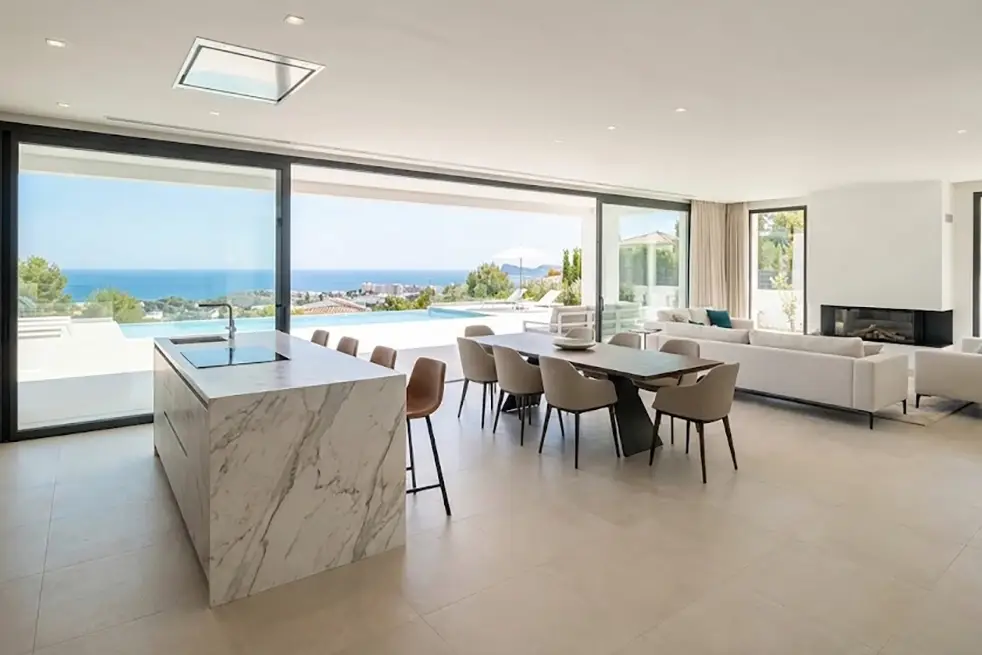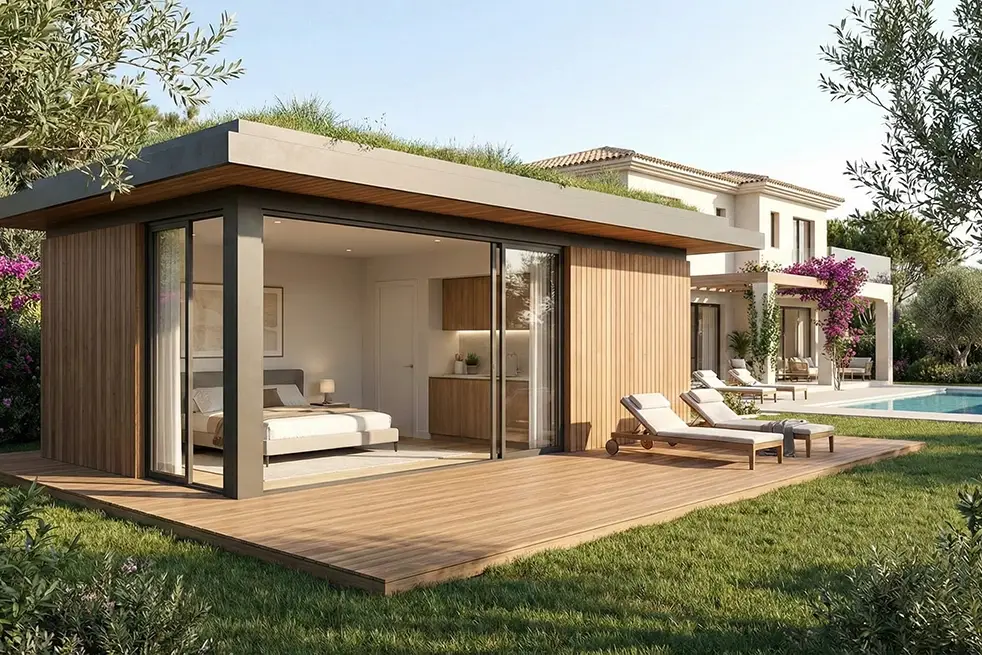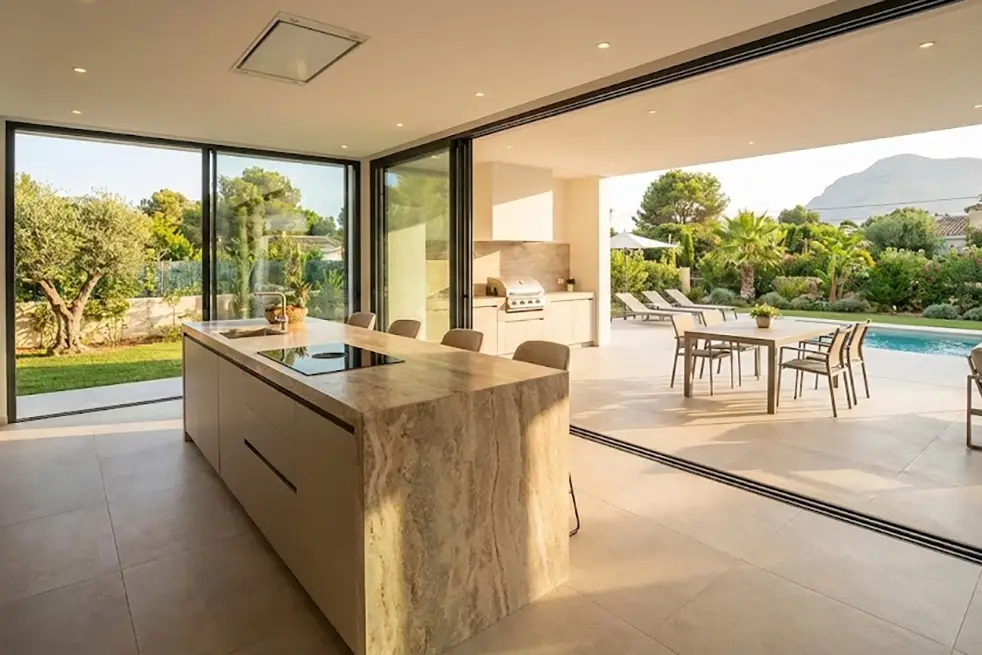When designing a home, integrating interior design and architecture from the outset not only improves the final result but also creates more functional and coherent living spaces. These two disciplines are often treated as separate phases, but the most balanced and comfortable projects arise when both work together from the very beginning.
Architecture and interior design: two visions that should work together
Architecture defines the volume, orientation, structure, and relationship with the environment. Interior design, on the other hand, shapes the living space: layout, materials, furniture, lighting, and atmosphere.
When both disciplines work together from the start, solutions better reflect the client’s lifestyle, make better use of natural light, and harmonise exterior and interior with consistency. Thus, integrating interior design and architecture ensures the space truly adapts to those who live in it.
Benefits of integrating architecture and interior design from the start
- Layouts adapted to real life: considering functionality and use during the architectural phase avoids later changes.
- Materials and textures that work together: from flooring to furniture, everything can be designed with aesthetic unity and coherence.
- Better use of natural light: the placement of windows and openings aligns with real interior needs.
- Saves time and money: by preventing modifications or improvised solutions during the build.
- A project with soul: creates a coherent, functional, and emotionally warm atmosphere.
Keys to achieving this integration from the beginning
1. Teamwork between architect and interior designer
From the first meeting, both professionals should share information, ideas, and goals. It’s not about interfering in each other’s work, but about combining complementary perspectives. Integrating interior design and architecture requires open communication from the start.
2. Listening to the client with a global perspective
The client’s desires influence not just the exterior design or layout but also how they want to live, the feelings they seek, and the style that represents them. Integrating interior design and architecture allows these emotions to be translated into space and form.
3. Planning furniture and storage from the drawing stage
When wardrobes, shelving or living areas are considered in the architectural phase, every centimetre is optimised, walls and corners are used effectively, and makeshift furniture is avoided. This approach enhances both functionality and aesthetics.
4. Designing lighting systems with intention
Natural and artificial lighting is part of both architecture and interior design. Planning it from the beginning ensures comfort, efficiency, and the right ambience for each room’s purpose. It also avoids poorly placed fixtures or visible installations.
5. Unifying materials and colour language
Cladding, flooring, joinery, walls and textiles should be considered together. The goal isn’t to match everything, but to give the project a coherent narrative from inside out. Integrating interior design and architecture helps establish that consistent thread.
Example: integrating interior design and architecture in a Costa Blanca home
Imagine a detached house on the Costa Blanca, where the architectural design features white volumes, clean lines, and large windows.
If a Mediterranean-style interior is planned from the beginning, using natural materials, light textiles, and built-in furniture, the interior can visually and emotionally extend the outdoor landscape. Light, colour and shapes flow with coherence. This way of integrating interior design and architecture turns the house into a harmonious whole.
A home designed as a whole
Integrating interior design and architecture from the start of the project is not a trend; it’s a way of understanding the home as a unified entity. It improves not just aesthetics, but also functionality, comfort, and the space’s identity.
At La Quinta Fachada, we work with this philosophy: we design homes where interior and exterior are conceived together—with purpose, with sensitivity, and with attention to every detail. If you’re thinking of building or renovating your home, get in touch with us—we’ll help you shape a coherent project from the first sketch.




